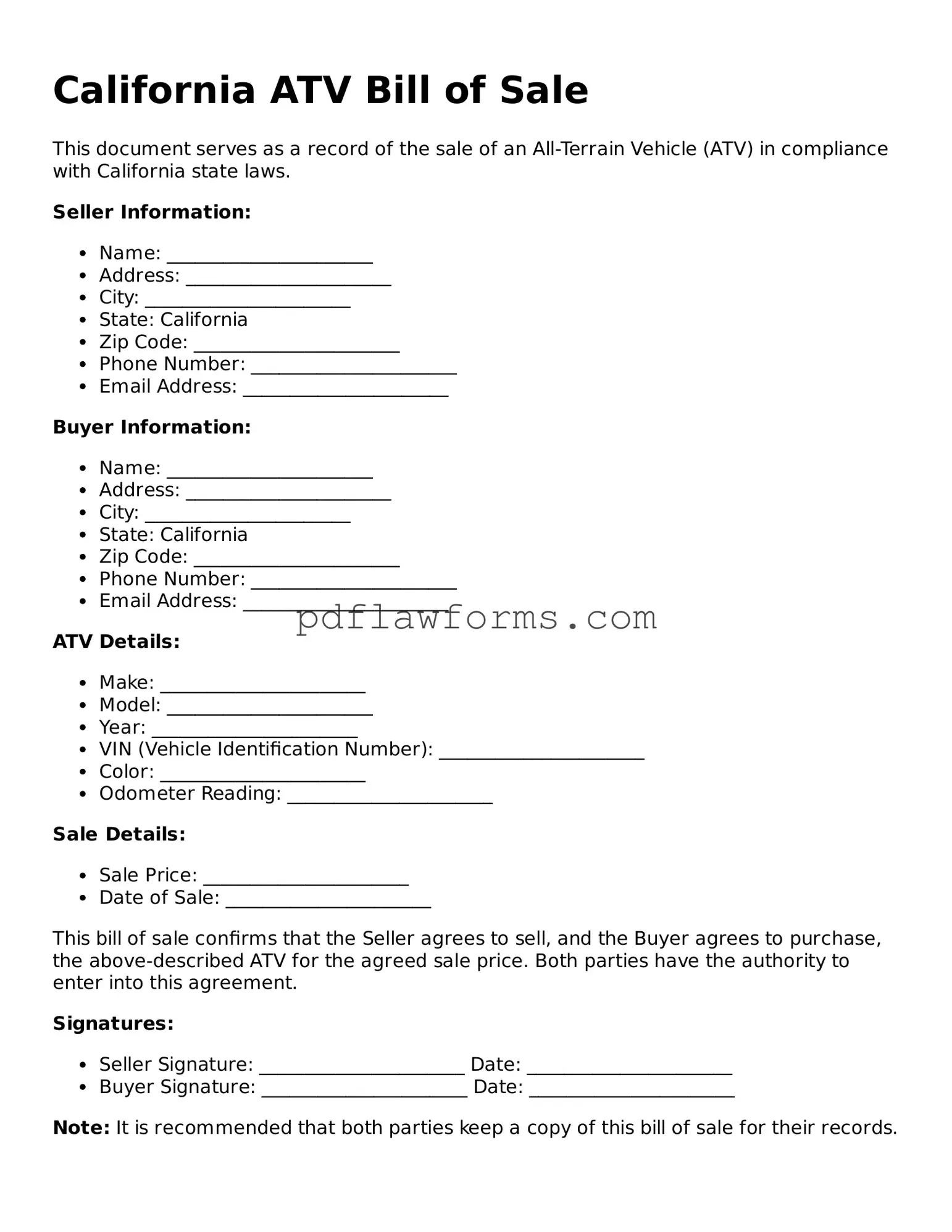When completing the California ATV Bill of Sale form, individuals often overlook critical details that can lead to complications. One common mistake is failing to provide accurate vehicle identification information. This includes the Vehicle Identification Number (VIN), make, model, and year of the ATV. Inaccuracies can result in delays during the registration process or potential disputes over ownership.
Another frequent error involves neglecting to include the purchase price. It is essential to document the sale price clearly, as this information is vital for tax purposes and future reference. Omitting this detail may lead to misunderstandings between the buyer and seller.
Buyers and sellers sometimes forget to sign the document. Both parties must provide their signatures to validate the transaction. Without signatures, the Bill of Sale lacks legal standing, which can complicate ownership transfer and registration.
Many individuals fail to date the form. A date is necessary to establish when the transaction occurred. This information is crucial for both parties, especially in case of disputes or if the buyer needs to register the ATV.
Inaccurate or incomplete personal information is another common issue. Names, addresses, and contact information must be filled out correctly. Errors can lead to difficulties in communication and may affect the registration process.
Some people do not provide a clear description of the ATV’s condition. It is important to note whether the vehicle is new or used and to describe any existing damage. This transparency helps prevent disputes after the sale.
Another mistake involves failing to retain copies of the completed Bill of Sale. Both the buyer and seller should keep a copy for their records. This document serves as proof of the transaction and can be important for future reference or legal matters.
Individuals may also overlook the necessity of including any additional terms or conditions of the sale. If there are specific agreements between the buyer and seller, such as warranties or payment plans, these should be documented in the Bill of Sale.
Lastly, many people do not check for any specific requirements set by local authorities. Regulations can vary, and it is crucial to ensure that all local laws are followed to avoid potential issues with the sale.
